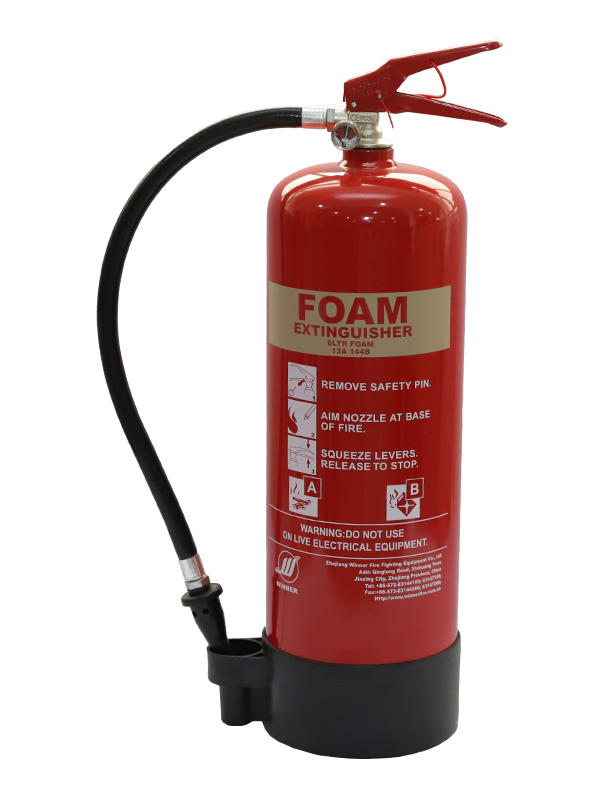Principle: There are two containers in the foam fire extinguisher, which hold two liquids respectively. They are aluminum sulfate and sodium bicarbonate solutions. The two solutions do not touch each other and do not cause any chemical reaction. (Never touch the foam fire extinguisher at ordinary times) When a foam fire extinguisher is needed, turn the fire extinguisher upside down and mix the two solutions together to produce a large amount of carbon dioxide gas:
Portable Foam Fire Extinguisher

In addition to the two reactants, some foaming agents are added to the fire extinguisher. When the switch is turned on, the foam is sprayed from the fire extinguisher, covering the burning material, isolating the burning material from the air, and reducing the temperature to achieve the purpose of extinguishing fire.
Structure: The acid-base fire extinguisher is composed of a cylinder, a cap, a sulfuric acid bottle, and a nozzle. The cylinder is filled with sodium bicarbonate aqueous solution, and the sulfuric acid bottle is filled with concentrated sulfuric acid. There is a lead plug at the mouth of the bottle to seal the mouth of the bottle to prevent the concentrated sulfuric acid in the bottle from being diluted by water or mixing with the liquid medicine outside the bottle. The working principle of the acid-base fire extinguisher is to use two kinds of agents to mix and produce a chemical reaction to generate pressure to spray out the agent, thereby extinguishing the fire.